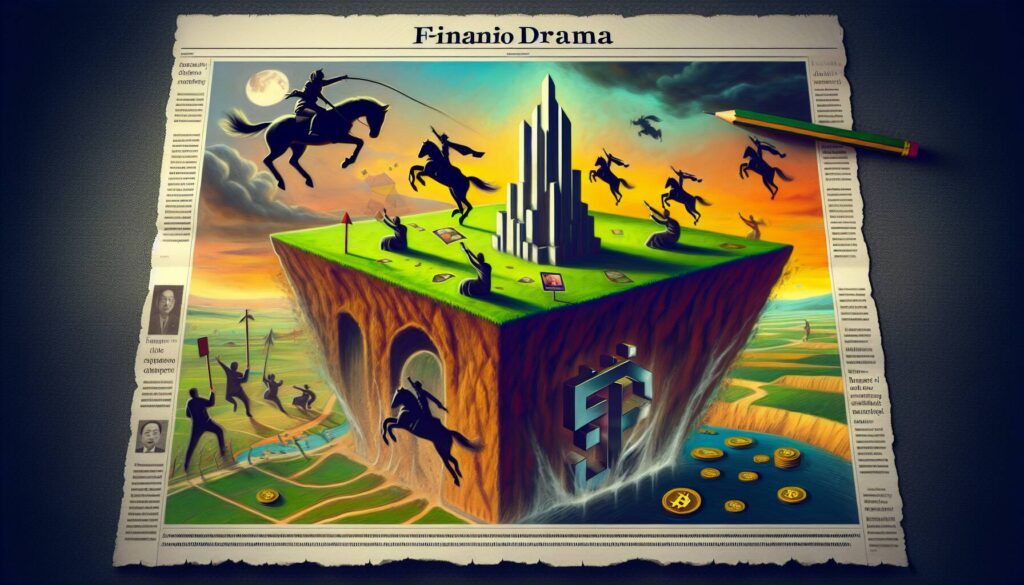In a recent press conference following the U.S. Federal Reserve’s decision to maintain interest rates, Chairman Jerome Powell made statements that have stirred significant reaction in the financial markets. His comments highlighted concerns over President Trump’s tariff policies, which Powell warned could potentially fuel inflation. “Increased tariffs are pushing up prices,” Powell stated, emphasizing that short-term inflation expectations are rising.
The chairman’s assertion that the Fed is “looking through inflation by not hiking [rates]” sent shockwaves through the markets. In the wake of his remarks, the price of Bitcoin (BTC) fell nearly 2%, landing at $115,800, while major U.S. stock indices shifted from positive gains to losses of roughly 0.5%. The impact on alternative cryptocurrencies was even more pronounced, as Ethereum (ETH), Solana (SOL), and XRP each experienced declines of nearly 4%.
The Federal Reserve decided to keep its federal funds rate in a range of 4.25% to 4.5%, aligning with market expectations. However, there were two dissenting votes from Governors Waller and Bowman, who called for a 25 basis point rate cut. Despite pressure from President Trump and some Fed members for a potential policy easing, Powell remained firm in his commitment to maintain steady rates, signaling continuity in the Fed’s approach amid a complex economic landscape.

Impact of Fed Chair Jerome Powell’s Remarks on Interest Rates
Key points regarding the recent comments by U.S. Federal Reserve Chairman Jerome Powell and their implications:
- Interest Rates Held Steady: The Fed decided to maintain the fed funds range at 4.25%-4.5%.
- Inflation Threats: Powell indicated that the president’s tariff policy could increase inflation, stating, “Increased tariffs are pushing up prices.”
- Market Response: Following Powell’s remarks, Bitcoin saw a nearly 2% decline, while major U.S. stock indices shifted from gains to losses.
- Dissents in Rate Votes: Two Federal Reserve Governors favored a 25 basis point rate cut, highlighting division within the Fed.
- Response to External Pressure: Powell’s comments suggest he remains firm on his stance amidst pressure from political figures to ease monetary policy.
The implications of these points could affect readers’ investment decisions, economic stability, and overall financial planning.
Comparative Analysis of Fed Chair Powell’s Rate Hike Threats
Jerome Powell’s recent remarks regarding the U.S. Federal Reserve’s stance on interest rates and inflation potentially position the Fed’s strategy against other central banks navigating similar economic climates. While Powell maintained the current rate amidst inflationary risks tied to tariff policies, similar institutions like the European Central Bank (ECB) and Bank of England (BoE) have chosen more aggressive rate hikes to combat rising inflation. This contrasting approach gives the Fed a competitive advantage in terms of market stability, allowing it to monitor inflation without immediately increasing borrowing costs.
However, Powell’s comments did elicit an adverse market reaction, highlighted by a notable dip in Bitcoin and other altcoins, suggesting increased volatility in the crypto sector. This response indicates a vulnerability; investors are concerned about the Fed’s capacity to maintain economic balance without triggering inflationary pressures or stifling growth. Market participants who thrive on speculative trading could be adversely affected, as seen by cryptocurrency prices plunging following Powell’s statements.
The target audience for Powell’s message revolves around institutional investors and policy influencers who may appreciate a cautious approach, valuing long-term stability over short-term gains. Interestingly, consumer markets may be mitigated by uncertainty in financial markets, especially sectors reliant on borrowing, as steady rates could foster investment in sectors like real estate, whereas higher tariffs pose risk for manufacturers reliant on global materials.
On the other hand, equity markets may find the dual dissents for a rate cut, particularly against Powell’s steadfast stance, indicative of rising internal pressures within the Fed that could foster instability. This could dissuade cautious investors from entering the market, potentially stalling recovery efforts in sectors heavily impacted by tariff-induced costs. Thus, Powell’s latest remarks are a double-edged sword, offering potential stability while igniting fear over inflation and economic sluggishness.

















